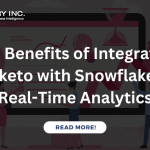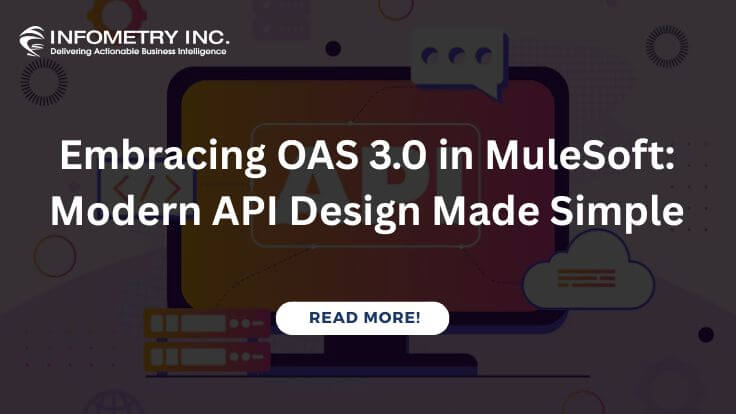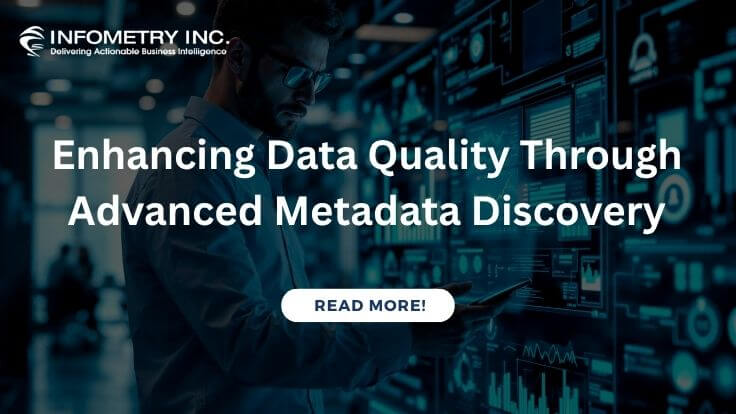
Top Benefits of Integrating Marketo with Snowflake for Real-Time Analytics
September 17, 2024
Real-Time Marketing Analytics with Marketo and Snowflake
October 25, 2024Imagine a world where data flows seamlessly, where reports are always accurate, and decision-making happens in real-time. For many businesses, this ideal is a distant dream, constantly disrupted by challenges in data synchronization. Companies are constantly navigating the complexities of data management, where even small delays or inaccuracies can have substantial consequences. For businesses using NetSuite, a comprehensive ERP system, synchronizing data across platforms presents its own set of challenges. Consider this: businesses with complex data environments often report a 30-40% increase in efficiency by optimizing their data sync processes. Yet, despite these potential gains, many still struggle with issues like complex data structures, maintaining data integrity, and ensuring real-time access to information. Let’s explore these common hurdles and discover how the latest features of the INFOFISCUS NetSuite ODBC Connector can help turn these challenges into opportunities for operational excellence.
The Challenges of Data Sync in NetSuite
1. Complex Data Structures
NetSuite manages a vast amount of data across various modules such as CRM, ERP, and eCommerce. These data structures can be complex and interrelated, making it difficult to sync data accurately and consistently across different systems. The sheer volume and intricacy of the data can lead to synchronization errors and inconsistencies.
2. Data Integrity Issues
Maintaining data integrity during synchronization is crucial. Even minor discrepancies between data sources can result in significant issues, such as incorrect financial reporting or inventory levels. Ensuring that data remains accurate and consistent throughout the synchronization process is a common challenge.
3. Performance Bottlenecks
Data synchronization can be resource-intensive, potentially causing performance bottlenecks. Slow data sync processes can impact system performance and lead to delays in reporting and analysis. Businesses need a solution that can handle large volumes of data efficiently without degrading performance.
4. Real-Time Data Access
In many industries, having access to real-time data is essential for making timely decisions. Traditional data sync methods may not provide the immediacy required, leading to outdated or inaccurate information being used for decision-making.
INFOFISCUS NetSuite ODBC Connector: The Solution to Sync Challenges
The No-Code INFOFISCUS NetSuite ODBC Connector is designed to address these challenges head-on. Here’s how its latest features help optimize data sync:
1. Advanced Data Mapping and Transformation
The INFOFISCUS Connector offers advanced data mapping and transformation capabilities, making it easier to handle complex data structures. It allows businesses to define and customize data mappings between NetSuite and other systems, ensuring that data is accurately synced and properly aligned. This feature minimizes the risk of errors and ensures consistency across different platforms.
2. Robust Data Integrity Mechanisms
To tackle data integrity issues, the INFOFISCUS Connector incorporates robust data validation and error-handling mechanisms. It performs thorough checks during the sync process to identify and resolve discrepancies, ensuring that data remains accurate and reliable. This helps maintain the integrity of financial reports, inventory data, and other critical information.
3. High-Performance Data Sync
Performance bottlenecks are addressed through the connector’s optimized data processing capabilities. It supports high-speed data transfer and efficient processing, reducing the time required for data sync and minimizing impact on system performance. Businesses can achieve faster data synchronization without compromising system speed or responsiveness.
4. Real-Time Data Sync
One of the standout features of the INFOFISCUS Connector is its support for real-time data synchronization. This ensures that data is updated across systems as soon as changes occur in NetSuite. Businesses can access up-to-date information instantly, enabling more timely and informed decision-making.
5. Incremental and Bulk Data Support
Seamlessly handle both incremental updates and large data loads, ensuring that your data is always up-to-date without overwhelming your systems.
6. High-Volume Processing
Efficiently process millions of rows in a single run, eliminating performance bottlenecks and speeding up your data synchronization processes.
7. Automated Scheduling
Easily schedule data loads with built-in automation, reducing manual intervention and ensuring timely updates without additional effort.
8. Quick Setup
Get started in no time with a user-friendly setup process that doesn’t require complex ETL pipeline development, allowing you to focus on leveraging your data rather than managing the sync process.
A Success Story: Overcoming Data Sync Challenges
Consider the example of a growing retail company struggling with data sync issues between NetSuite and their sales analytics platform. The company faced challenges with data accuracy, performance bottlenecks, and delays in accessing real-time information. Their existing solution was slow, prone to errors, and did not support real-time updates.
After implementing the INFOFISCUS NetSuite ODBC Connector, the company saw a remarkable turnaround. The advanced data mapping and transformation features allowed them to customize the data sync process to meet their specific needs. The robust data integrity mechanisms ensured that their data was accurate and reliable. High-performance data sync eliminated bottlenecks, and real-time data updates provided them with the immediate insights they needed to make quick decisions.
As a result, the company experienced improved operational efficiency, more accurate reporting, and better decision-making capabilities. The INFOFISCUS Connector proved to be a game-changer, transforming their data sync challenges into a competitive advantage.
Conclusion
Data synchronization between NetSuite and other systems can be fraught with challenges, from complex data structures to performance issues. However, with the latest features of the INFOFISCUS NetSuite ODBC Connector, businesses can overcome these hurdles and achieve optimized data sync. By leveraging advanced data mapping, robust integrity mechanisms, high-performance capabilities, and real-time updates, companies can ensure that their data is accurate, timely, and actionable.
Embracing the INFOFISCUS NetSuite ODBC Connector is a strategic move towards enhancing data synchronization and unlocking the full potential of your data for better decision-making and business growth.





